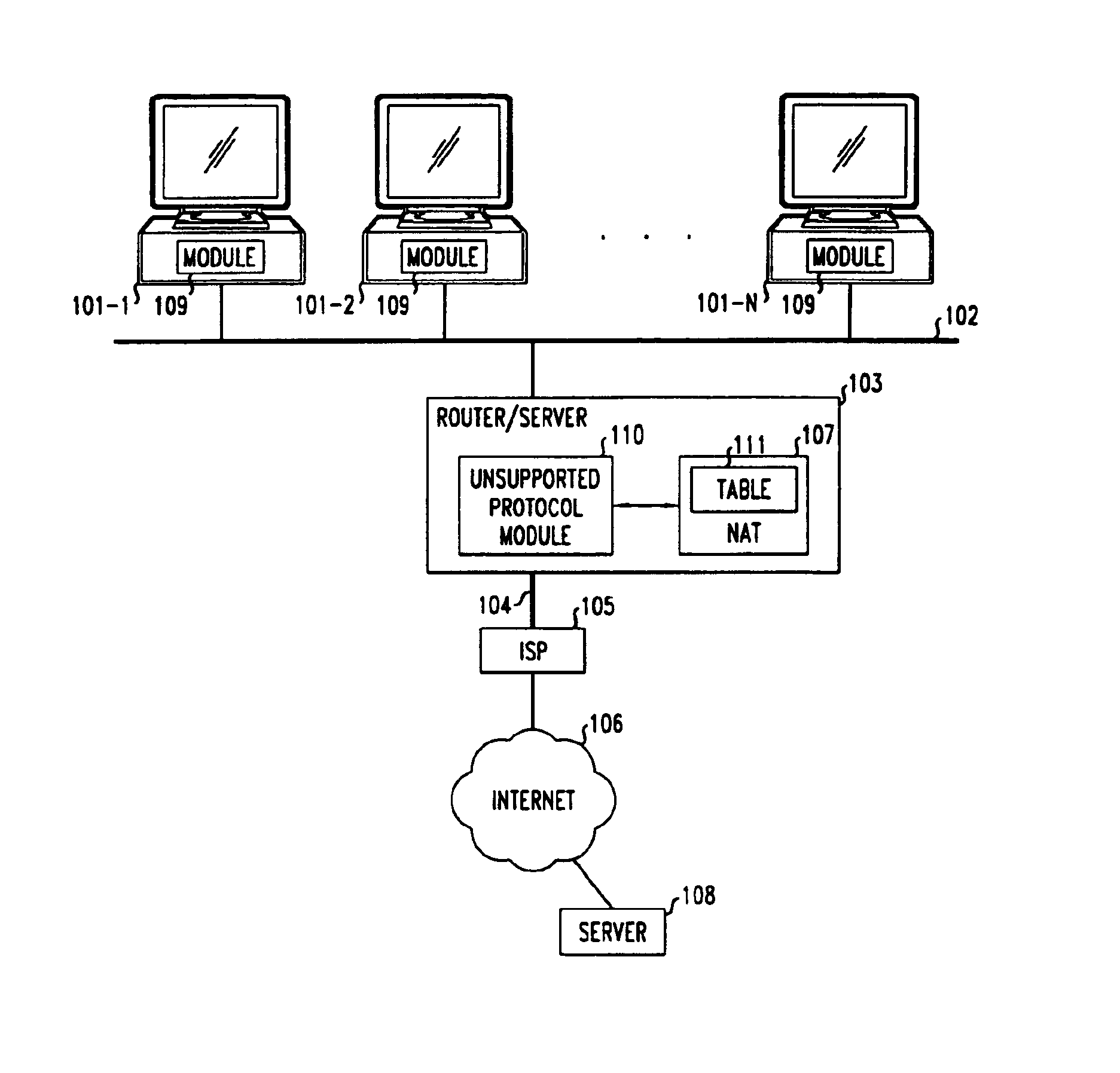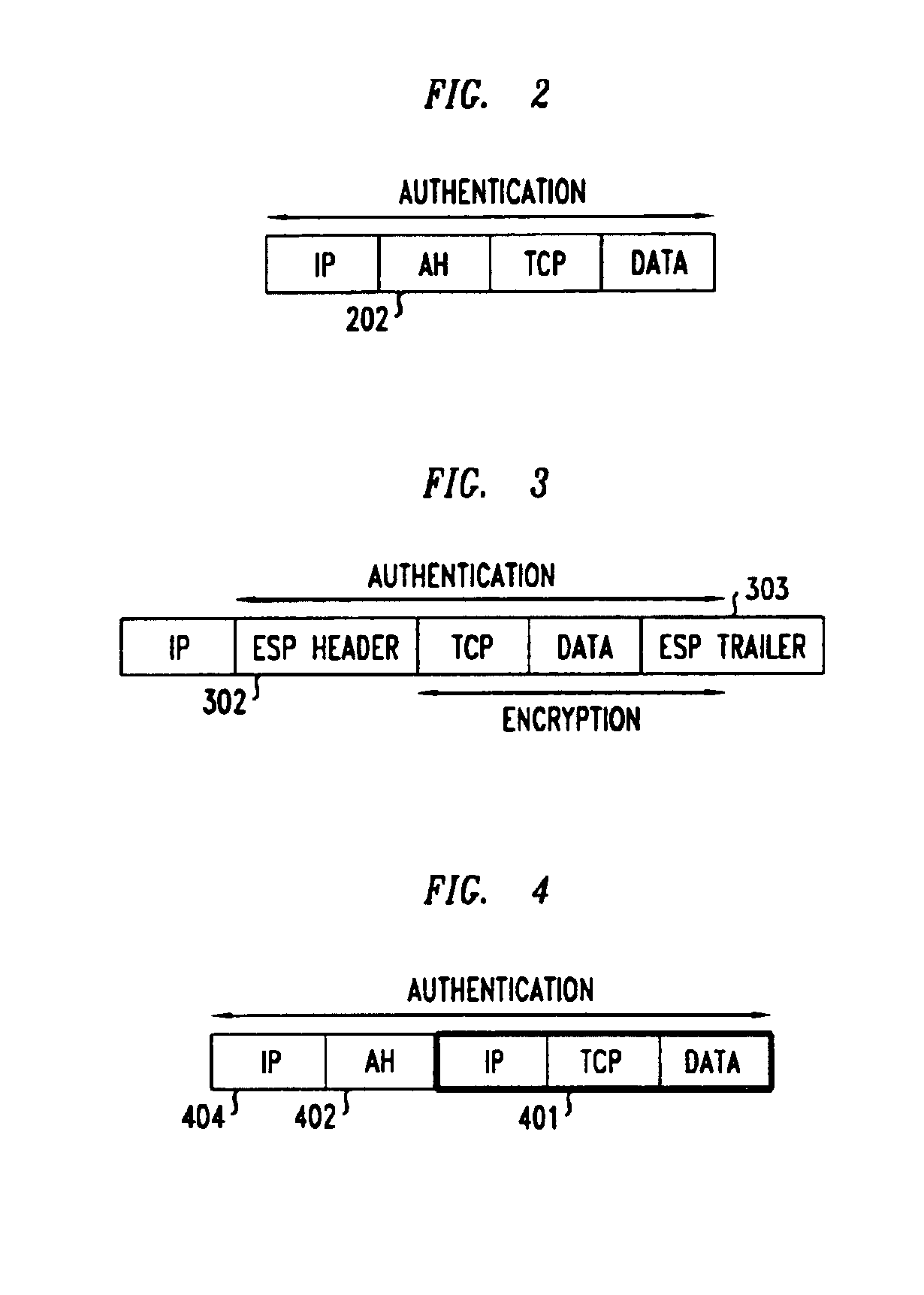Method and apparatus for extending network address translation for unsupported protocols
a network address and protocol technology, applied in the field of packet-based data communication on ip networks, can solve the problems of inability to fully interoperate with nat, difficulty in using network address translation, and inability to fully support pptp's security,
- Summary
- Abstract
- Description
- Claims
- Application Information
AI Technical Summary
Benefits of technology
Problems solved by technology
Method used
Image
Examples
Embodiment Construction
[0019]With reference to FIG. 1, a plurality of clients 101-1-101-N are connected on a local network 102. The local network 102 can be an Ethernet, a WaveLAN, or any other private network to which a plurality of operative clients can be simultaneously connected. The local network 102 is connected to a local router / server 103, which in turn is connected over a shared high-bandwidth link 104 to an ISP 105, which provides access to the Internet 106. Link 104 can be, for example, a cable, a DSL, or a T1 line. A hotel, an airport lounge, a conference center, are examples of facilities at which a shared link could provide Internet connectivity to a plurality of users for connection of their portable PCs. In order to enable the plural clients 101-1-101-N to share the link 104, each client is assigned a private IP address by the local router / server 103. As previously noted, the non-permanent IP addresses assigned to these clients are from the set of non-routable IP addresses allocated by IAN...
PUM
 Login to View More
Login to View More Abstract
Description
Claims
Application Information
 Login to View More
Login to View More - R&D
- Intellectual Property
- Life Sciences
- Materials
- Tech Scout
- Unparalleled Data Quality
- Higher Quality Content
- 60% Fewer Hallucinations
Browse by: Latest US Patents, China's latest patents, Technical Efficacy Thesaurus, Application Domain, Technology Topic, Popular Technical Reports.
© 2025 PatSnap. All rights reserved.Legal|Privacy policy|Modern Slavery Act Transparency Statement|Sitemap|About US| Contact US: help@patsnap.com



